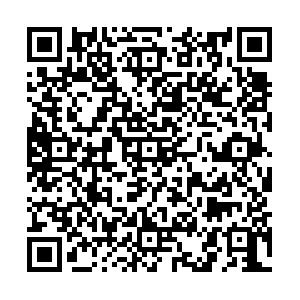Influential factors of leisure exercise among patients with type 2 diabetes mellitus based on the planned behavior theory
-
摘要:
目的 本研究基于计划行为理论探究2型糖尿病患者的休闲类身体活动状况及其影响因素。 方法 研究采用基于计划行为理论自行设计的2型糖尿病患者调查问卷,问卷信效度均良好。本研究建立结构方程来探讨影响糖尿病患者休闲类身体活动量的影响因素以及潜在的中介效应。 结果 本研究最终纳入774例2型糖尿病患者,其中年龄为60岁以上占52.6%,日均千步当量中位数为0.0千步当量,四分位数间距为(0.0,2.0)。结构方程显示,运动行为意向(β=0.278)会对休闲类身体活动量产生直接影响,同时感知行为控制(β=0.180)通过影响行为意向间接影响休闲类身体活动量。 结论 当前糖尿病患者休闲类身体活动量普遍不足。提高患者的休闲类身体活动量应从提升其控制运动行为能力方面进行干预,提高其运动行为意向。 Abstract:Objective This study applied the theory of planned behavior to investigate the leisure exercise situation among patients with type 2 diabetes mellitus (T2DM) and its influencing factors. Methods The questionnaire was self-designed based on the theory of planned behavior, which had good reliability and validity. Structural equation modeling was used to estimate the determinants of leisure exercise and the potential intermediate effect. Results 774 patients with T2DM were enrolled in this study. 52.6% were over 60 years old. The median amount of leisure exercise was 0.0 thousand-step equivalent with quartile of (0.0, 2.0). Structural equation modeling showed that the effects of attitude (β=0.080) and intention (β=0.277) on leisure exercise were significant. Besides, perceived behavioral control (β=0.180) had an indirect effect on exercise through intention. Conclusions In general, most patients with type 2 diabetes have insufficient amount of exercise. Improving attitude, control and intention to exercise would be one crucial part of exercise health education among patients with T2DM. -
图 1 休闲类身体活动量影响因素的结构方程
注:attitude:运动态度;subnorm:主观规范;PBC:感知行为控制;intention:行为意向;exercise:休闲类身体活动量;图中的路径系数为标准化系数;*表示路径系数有统计学差异(P < 0.05);结构方程模型控制了性别、年龄、文化程度、婚姻状态、收入水平、使用药物和胰岛素变量作为控制变量,限于篇幅,图中并未报告控制变量差异无统计学意义的相关结果以及具体条目的相关结果,仅保留了性别的影响。
Figure 1. Structural equation of influencing factors of leisure exercise
表 1 调查对象基本情况及中高休闲活动总量比较
Table 1. Demographic characteristics and leisure exercise
特征 人数(%) 日均千步当量 M(P25, P75) Hc P值 性别 5.233 0.022 女性 413(53.4) 0.0(0.0,0.0) 男性 361(46.6) 0.0(0.0,4.0) 年龄(岁) 2.475 0.649 ≤50 103(13.3) 0.0(0.0,4.3) 51~ 109(14.1) 0.0(0.0,2.3) 56~ 155(20.0) 0.0(0.0,2.1) 61~ 217(28.0) 0.0(0.0,0.0) ≥66 190(24.6) 0.0(0.0,1.7) 文化程度 6.523 0.089 小学及以下 86(11.1) 0.0(0.0,0.0) 初中 343(44.3) 0.0(0.0,1.9) 高中/中专/技校 206(26.6) 0.0(0.0,1.7) 大专/大学及以上 139(18.0) 0.0(0.0,5.3) 婚姻状况 0.618 0.432 无配偶 47(6.1) 0.0(0.0,0.0) 有配偶 727(93.9) 0.0(0.0,2.3) 家庭人均收入(元) 1.720 0.787 <3 000以下 225(29.1) 0.0(0.0,0.0) 3 000~ 238(30.8) 0.0(0.0,1.7) 4 000~ 102(13.2) 0.0(0.0,3.4) ≥5 000 209(27.0) 0.0(0.0,3.4) 药物使用情况 0.951 0.329 不使用降糖药或胰岛素 77(10.0) 0.0(0.0,5.7) 使用降糖药或胰岛素 697(90.0) 0.0(0.0,1.7) 总计 774 (100.0) 0.0 (0.0,2.0) 注:日均千步当量的分组比较使用Kruskal-Wallis检验进行比较分析。 表 2 计划行为理论各维度得分比较(x±s)
Table 2. Scores of each dimension of the planned behavior theory (x±s)
特征 运动态度 主观规范 感知行为控制 行为意向 总计 22.0±3.3 15.2±4.6 15.7±4.8 39.3±13.1 性别 女性 21.9±3.5 14.6±4.9 15.6±4.9 39.2±13.2 男性 22.0±3.0 15.9±4.2 15.9±4.8 39.4±13.1 Hca 0.070 11.186 0.650 0.002 P值 0.792 0.000 0.420 0.967 年龄(岁) ≤50 22.4±2.6 15.9±3.9 15.5±4.6 39.3±11.9 51~ 21.3±3.5 14.6±4.6 15.3±5.0 37.0±13.7 56~ 22.2±3.6 15.1±4.4 15.6±5.1 39.1±13.8 61~ 22.1±3.3 15.3±4.9 16.3±4.7 40.3±12.7 ≥66 21.8±3.2 15.2±4.8 15.6±4.7 39.5±13.4 Hca 10.766 4.348 4.475 7.280 P值 0.029 0.361 0.346 0.122 文化程度 小学及以下 21.5±3.5 15.0±5.4 14.8±5.0 35.8±14.9 初中 21.9±3.5 15.1±4.7 15.6±4.9 39.6±13.1 高中/中专/技校 22.1±3.1 14.9±4.4 16.2±4.5 39.8±12.5 大专/大学及以上 22.3±3.0 16.0±4.3 16.0±5.0 39.9±12.8 Hca 3.200 6.743 5.244 4.622 P值 0.362 0.081 0.155 0.202 婚姻状况 无配偶 21.7±3.7 15.4±4.0 15.9±5.3 37.8±15.4 有配偶 22.0±3.3 15.2±4.7 15.7±4.8 39.4±13.0 Hca 0.014 0.101 0.189 0.011 P值 0.907 0.751 0.663 0.915 家庭人均月收入(元) <3 000以下 21.9±3.4 15.2±4.7 15.5±4.9 39.3±13.3 3 000~ 22.1±3.3 15.5±4.4 15.5±5.0 38.9±13.5 4 000~ 21.7±3.1 14.4±4.5 15.5±4.8 38.5±13.4 ≥5 000 22.0±3.3 15.4±4.9 16.2±4.6 40.1±12.4 Hca 3.154 6.241 2.751 1.367 P值 0.907 0.101 0.432 0.713 降糖药或胰岛素使用情况 不使用 22.6±3.5 15.5±4.3 15.9±4.5 41.7±11.6 使用 21.9±3.3 15.2±4.7 15.7±4.9 39.0±13.3 Hca 6.411 0.102 0.055 4.176 P值 0.011 0.749 0.815 0.041 注:a表示Kruskal-Wallis检验结果 表 3 计划行为各因子得分Pearson相关系数矩阵
Table 3. Pearson correlation coefficient of the theory of planned behavior
维度 休闲类身体活动 运动态度 主观规范 感知行为控制 行为意向 休闲类身体活动 1.000 运动态度 0.082a 1.000 主观规范 0.030 0.172b 1.000 感知行为控制 0.091a 0.258b 0.181b 1.000 行为意向 0.209b 0.306b 0.278b 0.587b 1.000 注:a表示P < 0.05,b表示P < 0.001 -
[1] Chan JC, Malik V, Jia W, et al. Diabetes in Asia: epidemiology, risk factors, and pathophysiology[J]. Jama, 2009, 301(20): 2129-2140. DOI: 10.1001/jama.2009.726. [2] Wang L, Gao P, Zhang M, et al. Prevalence and ethnic pattern of diabetes and prediabetes in China in 2013[J]. Jama, 2017, 317(24): 2515-2523. DOI: 10.1001/jama.2017.7596. [3] Sigal RJ, Kenny GP, Wasserman DH, et al. Physical activity/exercise and type 2 diabetes a consensus statement from the American diabetes association[J]. Diabetes Care, 2006, 29(6): 1433. DOI: 10.2337/dc06-9910. [4] 中华医学会糖尿病学分会. 中国2型糖尿病防治指南(2017年版)[J]. 中国实用内科杂志, 2018, 38(4): 34-86. DOI: 10.19538/j.nk2018040108.Chinese Diabetes Society. Guidelines for the prevention and control of type 2 diabetes in China (2017 Edition)[J]. Chinese Journal of Practical Internal Medicine, 2018, 38(4): 34-86. DOI: 10.19538/j.nk2018040108. [5] Plotnikoff RC, Courneya KS, Trinh L, et al. Aerobic physical activity and resistance training: an application of the theory of planned behavior among adults with type 2 diabetes in a random, national sample of Canadians[J]. Int J Behav Nutr Phys Act, 2008, 5(1): 61-61. DOI: 10.1186/1479-5868-5-61. [6] Plotnikoff RC, Sonia L, Kerry C, et al. Physical activity and diabetes: an application of the theory of planned behaviour to explain physical activity for Type 1 and Type 2 diabetes in an adult population sample[J]. Psychol Health, 2010, 25(1): 7-23. DOI: 10.1080/08870440802160984. [7] 贾新明, 刘亮. 结构方程模型与联立方程模型的比较[J]. 数理统计与管理, 2008, 27(3): 439-446. DOI: 10.13860/j.cnki.sltj.2008.03.005.Jia XM, Liu L. Comparing the structural equation model with the simultanenous equattion model[J]. Application of Statistics and Management, 2008, 27(3): 439-446. DOI: 10.13860/j.cnki.sltj.2008.03.005. [8] Mcquitty S. Statistical power and structural equation models in business research[J]. J Bus Res, 2004, 57(2): 175-183. DOI: 10.1016/S0148-2963(01)00301-0. [9] 朱红亮. 糖尿病患者代谢综合征患病状况及影响因素分析[J]. 中国现代医学杂志, 2017, 27(10): 136-140. DOI: 10.3969/j.issn.1005-8982.2017.10.028.Zhu HL. Prevalence of metabolic syndrome in patients with diabetes mellitus[J]. China Journal of Modern Medicine, 2017, 27(10): 136-140. DOI: 10.3969/j.issn.1005-8982.2017.10.028. [10] Norman P, Conner M, Bell R. The theory of planned behaviour and exercise: evidence for the moderating role of past behavior[J]. Br J Health Psychol, 2000, 5(3): 249-261. DOI: 10.1348/135910700168892. [11] Armitage CJ. Can the theory of planned behavior predict the maintenance of physical activity?[J]. Health Psychol, 2005, 24(3): 235-245. DOI: 10.1037/0278-6133.24.3.235. [12] Esposito G, Van BR, Baranowski T, et al. Applying the model of goal-directed behavior, including descriptive norms, to physical activity intentions: a contribution to improving the theory of planned behavior[J]. Psychol Rep, 2016, 119(1): 5. DOI: 10.1177/0033294116649576. -





 下载:
下载:

